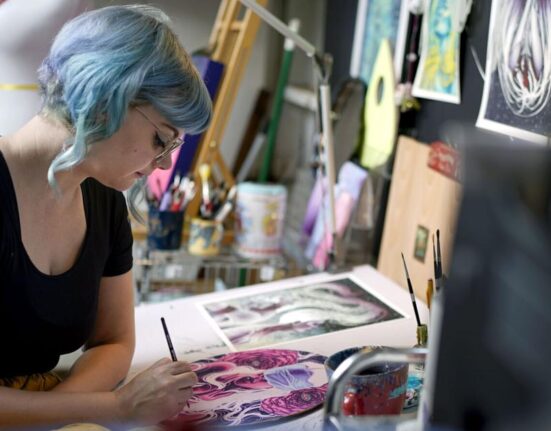Welcome to the 8th Annual POZ Awards, spotlighting the best representatives of HIV and AIDS in media and culture.
The POZ editorial staff selects the nominees, but POZ readers choose the winners.
Eligible nominees were active or were presented, published or produced between October 1, 2022, and September 30, 2023.
VOTING IS CLOSED
BEST IN VISUAL ARTS
Felix Gonzalez-Torres at David Zwirner
Felix Gonzalez-Torres is one of the rare artists whose work continues to go viral even after his death. Many people know him for his work, “Untitled,” which consists of a pile of wrapped candies that equal the approximate weight of his partner, Ross Laycock, who died of complications related to AIDS in 1991. Earlier this year, the David Zwirner gallery put together an exhibition of the Cuban artists’ work, including several exhibits that were never fully produced during his lifetime. Both works, “Untitled” and “Untitled” (Sagitario), two of the works on display in this exhibition, continue Gonzalez-Torres’s exploration of the themes of public-private space, as well as the ideas of contamination and the reality of the AIDS epidemic.
Every summer, Visual AIDS takes pieces out of their archive around a theme to put them in conversation. This year, curator Isis Awad compiled “No Bios,” which she used as a space for marginalized artists to display their work in a way that didn’t reduce them to simple identity markers. The exhibit featured HIV-positive queer and trans artists of color and, rather than relying on the usual narratives surrounding people of color — such as tragedy, or alarmism — the exhibit gave them a space to “mischievously playful.”
“This is not an attempt to make sense of anything, or theorize a human’s relationship with a virus,” Awad said of the show. “What ties the artists in this show together is a desire to make art against all odds; art that does not capitalize on its makers’ marginalized identities.”
Though Keith Haring has one of the most globally recognizable and commercialized bodies of work of any artist, let alone an artist living with AIDS, “Art Is for Everybody” is the first time that a museum has exhibited his work in Los Angeles. The show features over 120 artworks and pieces of archival material from the ubiquitous artist, including iconic pieces of art history such as the barking dog and the radiant baby alongside his personal journals.
While known for his graffiti, Haring worked in several mediums, which is something that “Art Is for Everybody” attempted to capture; the exhibit included video, sculpture, drawing, painting and more, spanning from the late 1970s up until 1988. And while Haring is most closely associated with AIDS, “Art” also prominently includes his work that addresses other social justice issues, including nuclear disarmament and Apartheid.
Science and art represent two drastically different methods of understand the world around us, including the AIDS epidemic. Featuring 12 original pieces of work, HIV Science as Art was the official art exhibit at the 12th International Conference on HIV Science, held in Brisbane, Australia in July. The exhibit sought to bring scientific advancements in HIV to life via collaborations between artists and scientists. The work spanned a variety of media, including fashion design, photography and sculpture and was for sale, with funds supporting community-based HIV programs and services.
“The AIDS response has required inspiration, imagination and a mirror held up to both humanity’s beauty and its ugliness,” said Eamonn Murphy of UNAIDS. “Our dream of ending this epidemic relies on cutting edge science, showing up inequalities and sharing a vision for a new world. We have always needed art to help us come to terms with what ‘is’ and get up to speed with what ‘can be.’”
Inspired by his time at the New York Medical College, Love + Science was a new play by playwright David Glass that opened this year at the New York City Center. The plot centers on two gay medical students who work together in a virology lab as the AIDS epidemic is just dawning. And while the play is about the AIDS crisis, it was inspired by the global health pandemic of our modern era. “The panic at the beginning of the COVID pandemic felt eerily similar to the beginnings of the HIV/AIDS epidemic,” Glass said of the show. “This led me to return to playwriting after decades working in medical research. Love + Science is my attempt to shed more light on a tumultuous moment in New York history that is being forgotten.”







